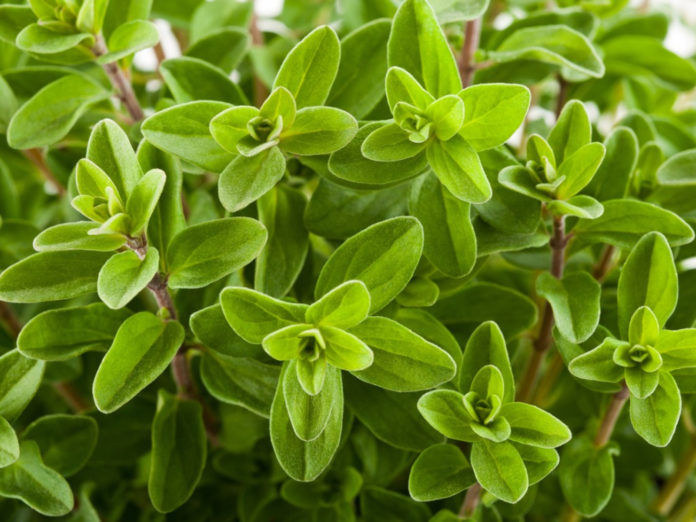If you’re wondering What is Marjoram, you’ve come to the right place. This article will teach you all there is to know about Marjoram.
Marjoram, sometimes known as sweet Marjoram, is a fragrant plant of the mint family that has been grown for thousands of years across the Mediterranean, North Africa, and Western Asia.
It has a milder flavor than oregano and is frequently used to garnish salads, soups, and meat dishes.
It is most effective when dried, although it may also be used fresh.
Marjoram has also been proven to have anti-inflammatory and antibacterial effects. As a result, it has been used medicinally to treat various conditions, including digestive problems, infections, and painful menstruation. Tea or extract can be produced from fresh or dried leaves. Both kinds are available at health food stores and online.
It’s crucial to remember that the potency and purity of marjoram extracts vary according to the brand and source. Look for third-party certification on the label to ensure you’re obtaining a high-quality product. Now that we’ve answered the question, “What is Marjoram?” let’s go a little further.
What does it taste like?
Marjoram has a taste that is earthy and woodsy, with undertones of balsam-like pine and citrus. The flavor is warm, spicy, and bitter, with hints of oregano and thyme.
What Are the Culinary Uses for Marjoram?
Marjoram may be rolled in cheesecloth with other herbs to make an aromatic sachet for braises and stews, or it can be sprinkled on top of vegetable side dishes fresh. Dried Marjoram is a common flavoring for salad dressings, meat dishes, and preserved meats like a German sausage. Fresh or dried, Marjoram is milder than oregano and is particularly suitable for tender vegetables, tomato-based dishes like tomato sauce and pizza, and chicken spice.
Marjoram is a key ingredient in spice mixes such as
• French herbes de Provence, which includes Marjoram, lavender, basil, rosemary, thyme, and fennel.
• Za’atar from the Middle East, which includes Marjoram, oregano, thyme, sesame, and sumac.
Dried Versus Fresh Marjoram: What’s the Difference?
Marjoram can be utilized as entire fresh leaves or dried and crushed Marjoram. To maintain the flavor of fresh Marjoram, it is normally added towards the end of cooking. Fresh Marjoram works well in herb pouches or sprinkled on top of a finished meal, but dried Marjoram works well in herb mixes and marinades.
Nutrition
When cooking with Marjoram, you’re more likely to utilize the dried herb. However, you’re also expected to use only a modest quantity.
According to USDA statistics, a hearty 1-tablespoon amount of Marjoram contains only 5 calories. The majority of those calories come from carbohydrates—fiber and naturally occurring sugar—but Marjoram is not a substantial source of carbohydrates, sugar, or fiber.
A normal 1-tablespoon dose of Marjoram is likewise unlikely to contain large amounts of micronutrients. However, you will receive a minor quantity of vitamin K. You’ll also receive a little more vitamin A, vitamin C, folate, and vitamin B6.
Calcium, iron, and manganese are among the minerals found in Marjoram.
USES & EFFECTIVENESS
- Asthma. According to preliminary studies, using 2 drops of marjoram oil daily combined with other medicines for 3 months may enhance lung function in asthma patients and is proven to be better than getting asthma medication alone.
- Coughs.
- Colds.
- Runny nose.
- Stomach cramps.
- Colic.
- Liver problems.
- Gallstones.
- Headache.
- Diabetes.
- Menopause symptoms.
- Menstrual problems.
- Nerve pain.
- Muscle pain.
- Sprains.
- Promoting breast milk.
- Improving appetite and digestion.
- Improving sleep.
- Other conditions.
More evidence is required to rate the effectiveness of Marjoram for these uses.
Possible Side Effects
Marjoram is probably safe for most individuals when used in usual amounts to flavor meals. When taken medicinally for a short time, it may also be safe.
According to some authorities, long-term usage of Marjoram may be hazardous.
“There is the considerable worry that long-term usage of marjoram may affect the liver and kidneys or cause cancer.”
Before taking Marjoram as medication, certain persons should seek medical counsel. Pregnant or breastfeeding women, toddlers, those with blood problems, and those preparing to have surgery are affected.
People who are sensitive to mint, hyssop, lavender, basil, oregano, and sage, as well as other plants in the mint family, may be allergic to Marjoram.
Few Precautions While taking Marjoram
Marjoram is LIKELY SAFE in food levels when taken orally. When used in greater dosages as medicine for short periods, it is POSSIBLY SAFE for most people. When used long-term, Marjoram is POSSIBLY UNSAFE. There is considerable worry that long-term usage of Marjoram may affect the liver and kidneys or cause cancer.
When applied to the skin:
There is insufficient credible evidence to determine if Marjoram is safe. Marjoram can cause allergic reactions in certain persons. Breastfeeding and pregnancy: When pregnant, Marjoram is POSSIBLY UNSAFE in therapeutic dosages. It may cause your menstruation to begin, endangering the pregnancy. There is insufficient credible evidence to determine if Marjoram is safe to use while breastfeeding. To be on the safe side, limit your food intake. In those with bleeding issues, taking medical doses of Marjoram may decrease coagulation and increase the likelihood of bruising and bleeding.
Slow heart rate: Marjoram has the potential to slow the heart rate. People who also have a sluggish heart rate may find this difficult. Use Marjoram with caution if you have this condition.
Substituting Marjoram when cooking
If you don’t have Marjoram, you may substitute a variety of different herbs.
Oregano works really well, although it is stronger than Marjoram, so use a bit less.
While thyme and sage have somewhat distinct flavors, they can also be used as substitutes. For these herbs, use a 1:1 ratio.
7 Recipes Featuring Marjoram
1. Marjoram and garlic sausages served with flatbread and sauerkraut
2. Traditional stuffing made with thyme, Marjoram, and sage.
3. Marjoram-flavored Italian tomato sauce
4. Black pepper, grated parmesan, and marjoram cacio e Pepe
5. Butternut squash roasted with feta and marjoram dressing
6. Marinated roasted red peppers with chopped finely chopped garlic and fresh Marjoram
7. Roasted chicken breast with za’atar spices and lemon juice
To answer your question; What is Marjoram?
Marjoram is a fragrant plant that has long been used in culinary and traditional medicine.
It may reduce inflammation, relieve stomach difficulties, and regulate the menstrual cycle, among other things.
If you’re using it as a supplement, use caution and see your doctor if you have any medical issues.

















